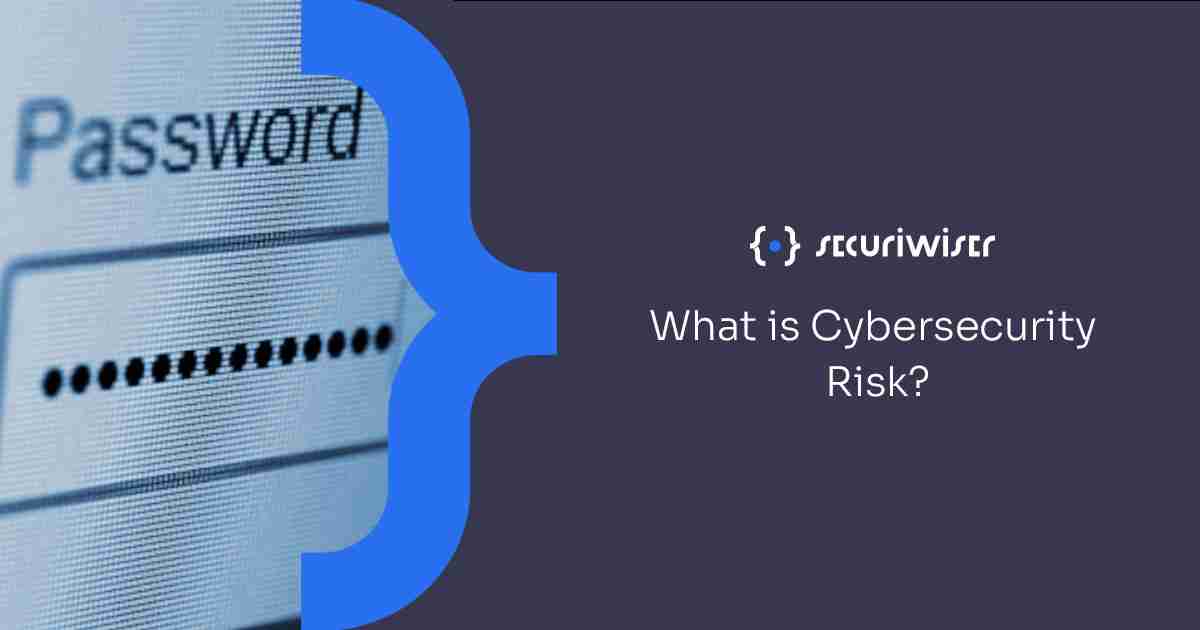What is Cybersecurity Risk?
Blog / What is Cybersecurity Risk?
3 MIN READ


Cybersecurity risk refers to the likelihood of your company being exposed to or losing money as a result of a cyberattack that can include anything from a virus or malware attack to a phishing scam or data theft.
As the world becomes more reliant on technology, the risk of cybersecurity breaches grows. That’s why it’s important for individuals and businesses alike to understand what cybersecurity risk is and how it can affect their company.
The risk of cyberattacks from outside your company is growing as a result of increased global access and the usage of cloud platforms with low default protection parameters. IT risk protection and access control were once sufficient, but now advanced data security experts, tools, and cybersecurity risk management are needed to deal with the associated cybersecurity risks.
For information management, it's no longer enough to focus on conventional IT experts and security controls. Threat analysis capabilities and defence systems are clearly needed to reduce the organization's cyber vulnerabilities and identify possible attack surfaces. When prioritising third-party suppliers, businesses must conduct risk analyses and put in place a risk reduction mechanism as well as a cyber incident management plan in the event of a breach.
What Is Cybersecurity?
Cybersecurity refers to the tools, processes, and practises used to protect an organization's intellectual property, customer data, and other sensitive data from unauthorised access by cybercriminals. Cybercrime is getting more prevalent and extreme, thus necessitating an improved cybersecurity risk management as part of every company's risk profile. Cybersecurity preparation should be a feature of your corporate risk assessment strategy as well as everyday business activities. It's one of the most significant threats to any company in today’s world.
What Is the Economic Importance of Cyber-Attacks?
Although general IT security measures are beneficial, they are inadequate to guard against advanced cyber threats and poor setup. Unwanted access to an organization's records is possible more than ever before thanks to technological advancements. The supply chain, consumers, and other third and fourth-party suppliers are increasingly providing information to third parties. The danger is exacerbated by the fact that businesses are rapidly storing vast amounts of personally identifiable information (PII) on third-party cloud services which must be installed properly to ensure adequate data security.
Another consideration is the growing number of devices that are constantly linked for data sharing. When the company grows in size and the number of staff, clients, and third-party suppliers grows, so do the demands for immediate access to information. Your staff and customers may require immediate real-time access to data from everywhere, which increases the attack surface for ransomware, bugs, and other exploits exponentially. Foreign enemies, coordinated hackers, insiders, bad setup, and the third-party suppliers are all potential sources of unanticipated cyberattacks
Organizations are adopting tools to better track their third-party contractors and constantly search for data breaches as mandates and legislative requirements surrounding disclosure of cybersecurity accidents and data breaches continue to develop. The effectiveness of detecting, responding to, and communicating a possible data breach outweighs the utility of conventional, cyclical IT security measures as a preventative measure.
What Are the Most Serious Cyber-Threats and Risks?
Data breaches can have huge negative effects on businesses and their credibility, and are often caused by inadequately security measures. Companies can potentially face financial and legal actions if they don't have a robust IT protection management strategy in place. They need to comply with legislation and rules that are related to cybersecurity. To maintain the confidentiality, integrity, and availability (CIA) of information assets, an organisation can normally plan and enforce cybersecurity controls around the enterprise.
The motive behind cyberattacks may vary from one threat actor to another. Motives may include financial fraud, data theft, access denial, and disruption of essential infrastructure and important government or agency resources. Some of these attacks can be carried out by nation states, cybercriminals or ordinary hackers. Sometimes, they can even be carried out by unhappy employees or service providers.
It's become incredibly necessary to figure out what knowledge could damage the company's finances or credibility if it were to be hacked or made public. Things like addresses, social security numbers, and biometric databases are examples of publicly identifiable information (PII) and therefore valuable data for cybercriminals. Other examples also include customer information, employee information, contracts and intellectual property data.
Who should be responsible for cybersecurity risk?
Leadership sets the tone for cybersecurity risk control, and the board members are often included in the planning phase. Some companies may have a Chief Information Security Officer (CISO) in place to take charge of cybersecurity and create the enterprise's vision, plan, and programme to ensure that all the company’s data is properly secured.
A CISO's responsibilities in terms of cyber defence are as follows:
Managing and monitoring protection protocol. Maintaining and updating systems and applications, devices and software Managing and configuring networks to ensure they are secure Recruiting cybersecurity professionals and training employees Managing data access and putting in place restriction systems. Encrypting data when it is needed Setting up and configuring cloud servers
Conclusions
Cybersecurity risk assessment is a lengthy and continuous process. Cyberattacks occur at any time. Everyone within your company needs to play their role in mitigating cybersecurity risks.
Your business, and more critically, your customers' records may be at risk if you don't take the necessary precautions. Securiwiser can help you stay on top of your cybersecurity by providing you with daily cybersecurity monitoring and threat detection. Sign up today by clicking here.
How secure is
your business?
Blog categories
How secure is
your business?